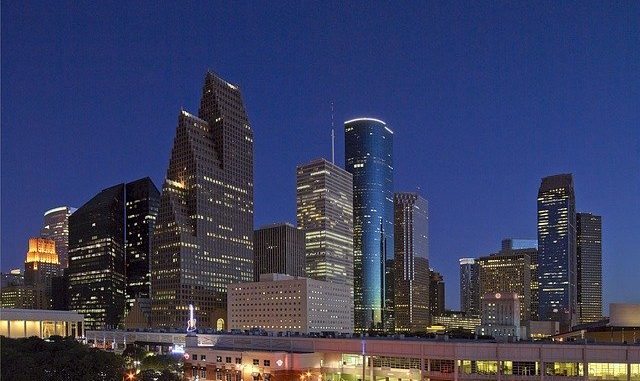
It’s been over five months since I published my last blog post on flooding. I have to confess to not belting out my rancid criticism of local government like I once did, but I don’t have the fire to write like I used to. However, a number of major issues have reared their head in local politics, including Houston’s 7+ billion dollar pension shortfall debacle, a multi-billion dollar sewer system problem, and now rumblings of the Metropolitan Transit Authority wanting to build a commuter rail line out to Missouri City Texas and hold yet another bond election for more rail. This post is an update on Metro.
The TMC – Missouri City rail line
Metro’s new board chairwoman, Carrin Patman, has been on a minor media offensive recently, pushing for the construction of a commuter rail line between the Texas Medical Center and Missouri City. She has the backing of Congressmen Green and Culberson. The rail line was part of the hotly contested November 2003 Metro referendum. A fellow named Steve Brown cheerleads the rail line at the site of one of Houston’s most reliable socialists.
I’ve probably attended a hundred public meetings having to do with Metro Rail over the years. One of the standard boilerplate opinions that I’ve heard expressed an untold number of times, usually by either local politicians, various board appointees, chambers of commerce businessmen types, or other members of the officially ordained expert class, goes along the lines that “This rail line has to be built because there are X millions of square feet of commercial development in the area. Additionally, there are Y thousands of people who live in the area. The area is vibrant, growing, and in need of rail!” Mr. Brown’s statement fits this general observation to a T.
This justification of building rail needs to stop, albeit I know full well by now that it won’t and the credentialed political classes will keep spouting it. Metro’s record with light rail lines producing the predicted results is only one for four, with the Main Street rail line matching and beating the previous bus traffic, but the other three rail line extensions failing to match predicted outcomes by substantial margins.
The ridership prospects for a commuter rail line, as with all other rail lines other than the Main Street line, are not looking good. A review of Metro’s ridership report for the #170 Missouri City / Texas Medical Center bus route, which my old spreadsheet indicates has been running since 1999, shows that the bus route has been attracting between 400 and 850 boardings per day for the past 17 years. Remember that the government transit industry in America counts boardings, not riders, when reporting ridership data. Each and every time a person boards a transit vehicle, the boarding gets counted. Ergo, it is highly likely that the actual number of patrons using the #170 Missouri City/TMC bus route is half of the “boardings” figure, so it is probable that only 200 – 400 transit patrons have been using Metro over the years between Missouri City and the TMC. Metro’s page for the #170 bus route indicates there are 14 buses that leave Missouri City in the morning for the TMC between 5:06 am and ending at 8:16 am. 13 buses leave the TMC for Missouri City between 3:55 pm and ending at 6:54 pm. The boardings data for June 2016 was 829 boardings per day (see the last page of the June 2016 ridership report).
But wait! Why be so dismal? After all, the Houston Galveston Area Council (HGAC) has a rail study on the US 90A TMC / Missouri City rail corridor that predicts 6,000 – 13,000 boardings per day taking the train into the TMC and back (see Pages 38 and 39) should the rail line be built. Yep, if this train gets built, then the transit ridership between Missouri City and the TMC will increase 7-15 times over existing ridership. Does this sound outlandish? It should, because the political classes in Houston have been making these predictions ever since Metro won the November 2003 election. The rosy ridership predictions for the University rail line are 8 times over what the current bus route carries, while projections for the Post Oak bus route are that it will carry 20-30 times as many riders as the current #33 Post Oak bus route does now.
And at what cost? The H-GAC US 90A rail corridor study discusses several alternatives (Congress requires this if you’re going to obtain the coveted federal grants), but the numbers bandied about on Pages 45-46 of the study indicate costs of $352 – 756 million, depending on what option is picked. Rumor I’ve heard through the grapevine is that the cost of this commuter rail line may reach $1 billion. Even if the H-GAC rail feasibility study ridership forecasts are met, spending $350 million – $1 billion in taxpayer monies to accommodate 6,000 – 13,000 boardings per day is just another scandalous waste of money. But don’t worry! Some people say this is progress and forward thinking!
The Metro 2017 bond election
Not to be deterred at all by having burned through $2.6 billion on light rail, only to have agency boardings down 20 percent over the past 15+ years, the current Metro board is hard at work, charging ahead with plans to hold another bond election in 2017. The Houston Business Journal article notes that 7 new Park & Ride lots, 8 new transit centers, 23 new light rail stations and 15.2 miles of new light rail track have been the result of the 2003 referendum. But the real question that needs to be answered is, did all these new toys and facilities result in substantial traffic congestion reduction and much higher transit patronage? Are hundreds of thousands of Houstonians now using transit to get to work? No? Well then, no it isn’t mandatory or necessary to keep building more transit toys and facilities at taxpayer expense. The result of the 2003 Metro referendum has been a negative marginal productivity. The costs have gone up, while the productivity in terms of agency boardings has gone down. The only people who are really coming out ahead and benefiting from this are Houston’s political classes.
Government provision of services is a lousy deal
One of the themes I’m developing (in this post on Metro, and for future posts on the City of Houston’s water and sewer debacle, government schools, as well as on the City of Houston’s pension issue) is that all of the inflation in the modern-day economy is occurring in areas of the economy that are provisioned by taxes, or are under heavy government regulation. In nearly all instances, governments also wield a near (or full) monopoly over the provision of these services. Whereas Houstonians (and Americans as a whole) are getting as good of a deal or better than they ever have before in private markets, we are getting, at best, the same deal (and often less and less of a deal) performance wise in the world of politics, all while the costs of government keep going up. I should add that since there is a major election coming up next month, all of the cost escalations in local government have occurred while Democrats have been in charge. Because that is what Democrats do – they drive up the cost of everything.



